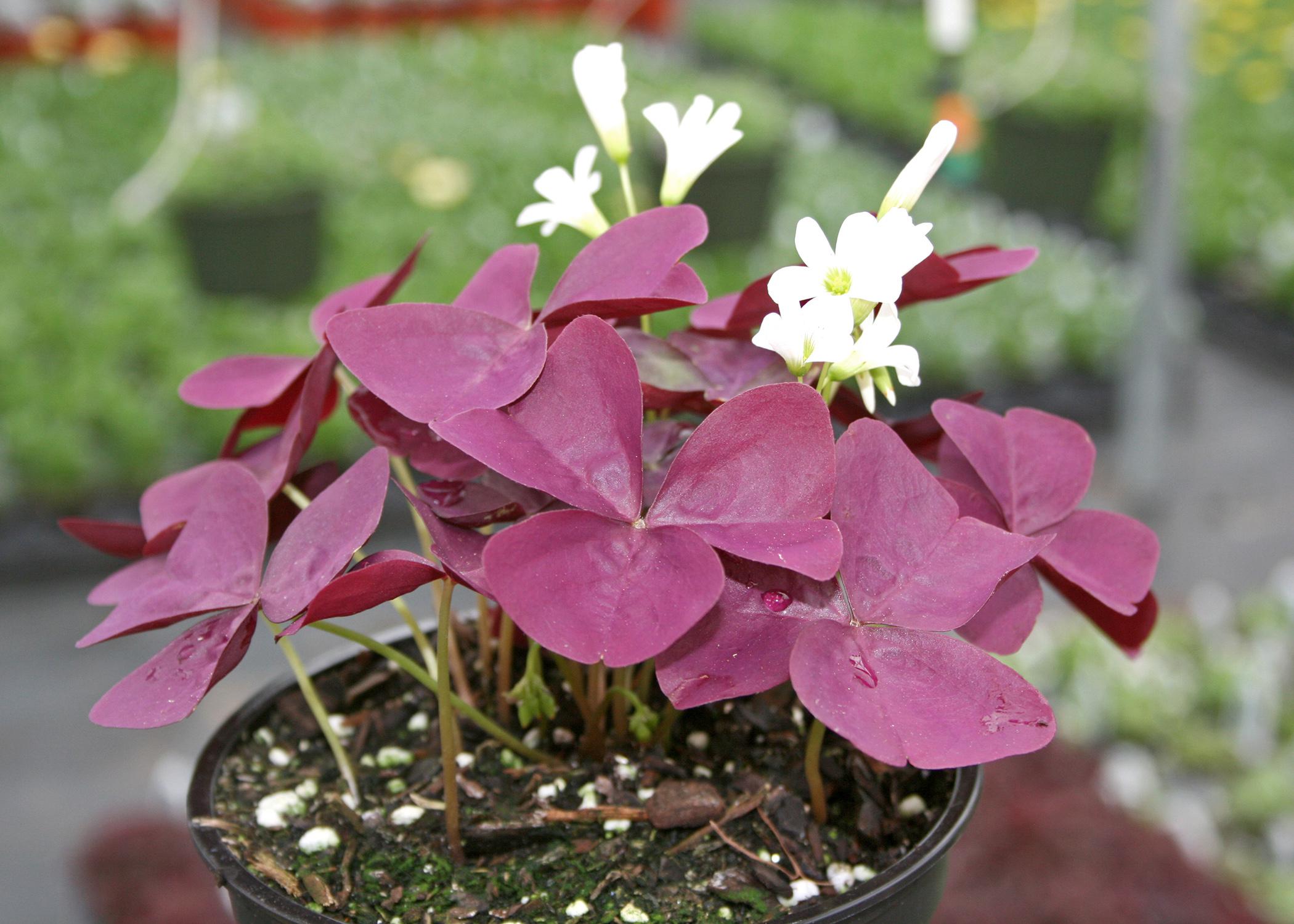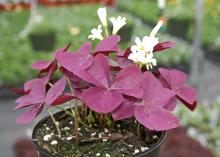Information Possibly Outdated
The information presented on this page was originally released on March 3, 2014. It may not be outdated, but please search our site for more current information. If you plan to quote or reference this information in a publication, please check with the Extension specialist or author before proceeding.
Shamrocks are good landscape additions
With St. Patrick’s Day almost here, I’m reminded of the good old days trying to find lucky four-leaf clovers in my lawn as a kid. Of course, some years it was hard because clover is a weed and my dad would spray to get rid of them.
Clover normally has three leaves, but sometimes a mutation produces a fourth leaf. When I found one, I was sure good luck would come my way. Little did I know that this belief has a long history. Four-leaf clovers were considered an omen of good fortune by ancient Celtic peoples.
But St. Patrick’s Day is more closely related to the three-leafed shamrocks that are available in garden centers. These shamrocks are more of a florist specimen rather than an outdoor plant.
Some shamrocks have traditional green leaves, but I like the selections with purple to almost black leaves. The Charmed series offers Velvet, which has purple-black foliage. The foliage of Wine is a burgundy-maroon that is perfect for Bulldog fans. Both Velvet and Wine varieties have white flowers that almost shine against their dark foliage.
Once the weather gets warmer, you can place shamrock containers out on the patio, preferably in full shade as the foliage will bleach when exposed to sunshine. Shamrocks make great filler plants for shade-loving combination containers.
Landscape oxalis are cousins to the clover I searched through as a young boy. They are closely related to the weedy oxalis species that can be a pain to control in flower and vegetable beds.
These landscape oxalis grow to about 6 inches tall and have a spreading habit of 12 inches or greater. They can be planted in full to partial sun. Their best characteristic is that they are sterile and noninvasive.
Burgundy is a purple-black selection with bright yellow flowers. My favorite is Sunset Velvet. In partial shade, the foliage is primarily chartreuse, but in full sun, it lives up to its name with fiery yellow-orange foliage that is lime-tinged.
I suggest you plant these in containers and allow them to trail over the edge.
If you do plant them in the ground, you might want to label them as they do look like the weedy species of oxalis in your landscape. This precaution will stop someone from thinking they are doing you a favor and weeding the plants out.
Once established, ornamental oxalis species are drought tolerant in the landscape, but they need to be watered when grown in containers.
Mississippi has a little native oxalis called pink wood sorrel. I have some in a shady corner and always enjoy seeing the cheery, clear pink flowers in the spring. In this part of my yard, they bloom through much of the summer, but right along the edges where the sunshine starts to creep in, they go to sleep in summer’s high temperatures and awaken in cooler weather the following spring.
So why are shamrocks, clover and oxalis associated with St. Patrick’s Day? Patrick returned to Ireland to spread the gospel of the Holy Trinity, but this was a difficult concept for the congregations to understand. So he went to the garden and selected a three-leafed shamrock (clover was referred to as shamrock in those days) to demonstrate the three leaflets in one leaf.
So bring some home this year and you will be able to celebrate St. Patrick’s Day in authentic, historic fashion.








